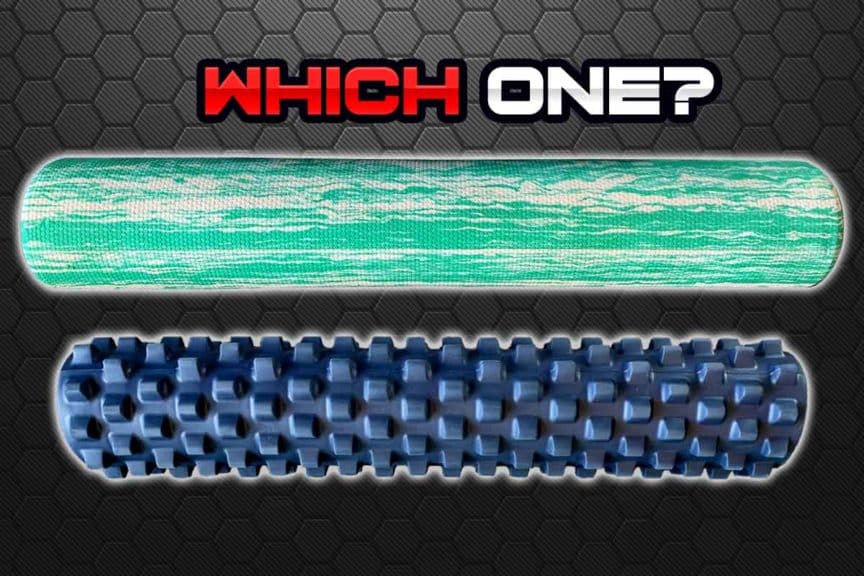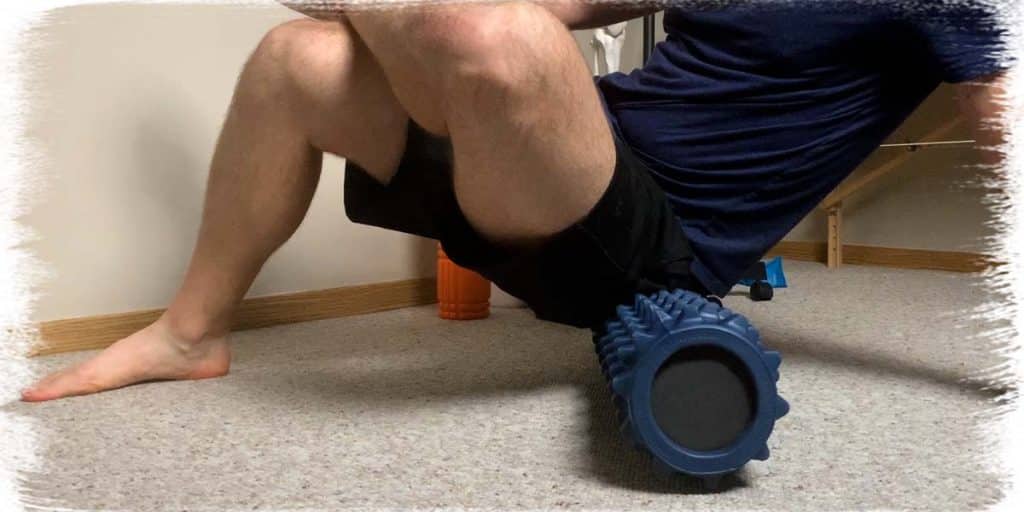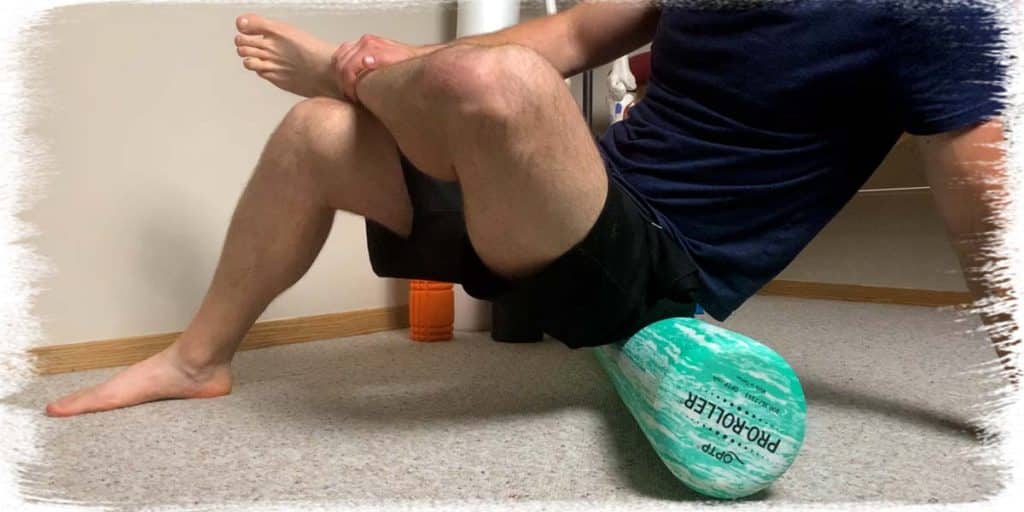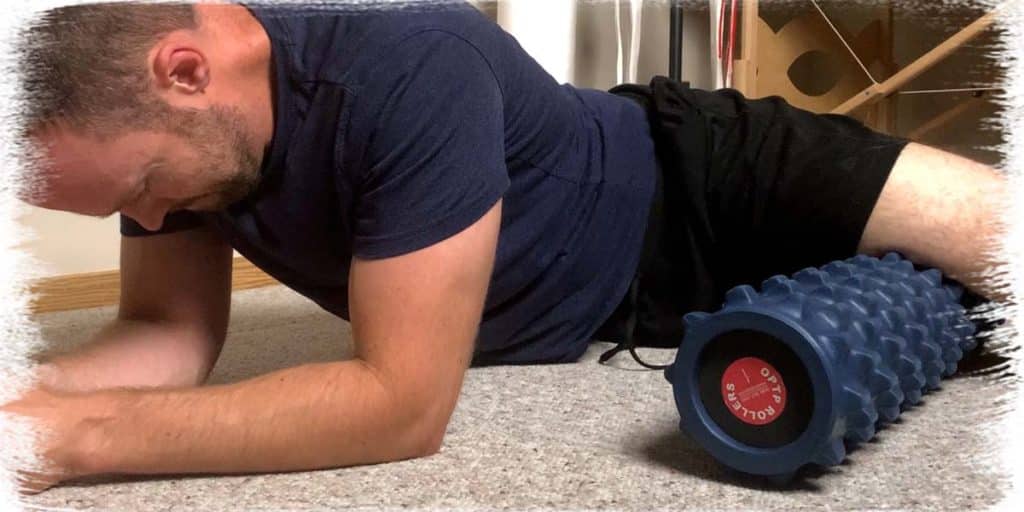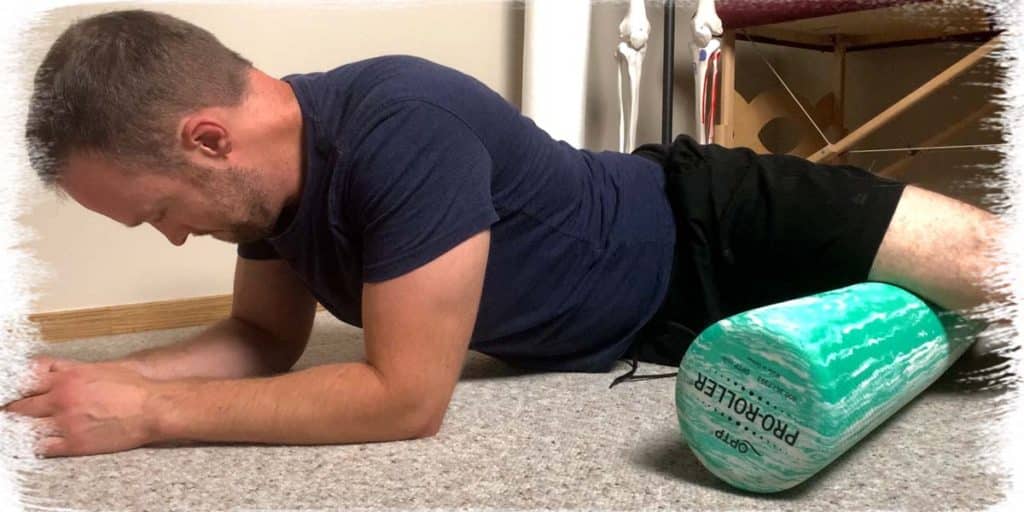I’m a firm believer that every tool has a time and a place. This is no different in the world of injury prevention and rehab. Many believe that foam rolling is a waste of time, while others swear by it. Many say “it depends” since one must take into account the context of its use, who is using it along with how and why it’s being used. As a physical therapist and strength & conditioning specialist, I fall into the latter of the two camps.
While both types of rollers can be used for similar reasons and in very similar ways, the Rumble Roller is designed to be a slightly more aggressive approach to reducing muscle tension and knots than a traditional roller, although each has unique advantages based on the needs of the individual.
If you’re looking to not only find out the differences between each of these rollers but also which one may be best or most ideal for YOU, then this article has you covered. Simply keep on reading to learn about these different styles of rollers as a means to help you become more informed between the commonalities and the differences they both offer.
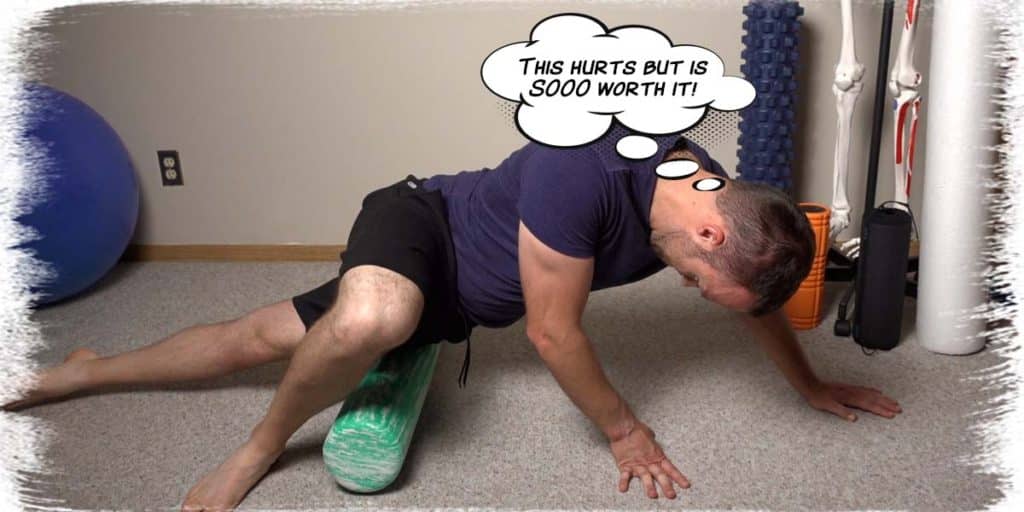
ARTICLE OVERVIEW (Quick Links)
Click/tap on any of the following headlines to instantly jump to that section of the article!
• Common features between the Rumble Roller and foam roller
• Differences between the Rumble Roller and foam roller
• Unique features of the Rumble Roller
• Unique features of the foam roller
• Which one is actually better?
• Bonus: What are vibration rollers?
• Final thoughts
Related article: Foam Rolling Your Pecs: A MUCH More Practical & Effective Way
Common features between the Rumble Roller and foam roller
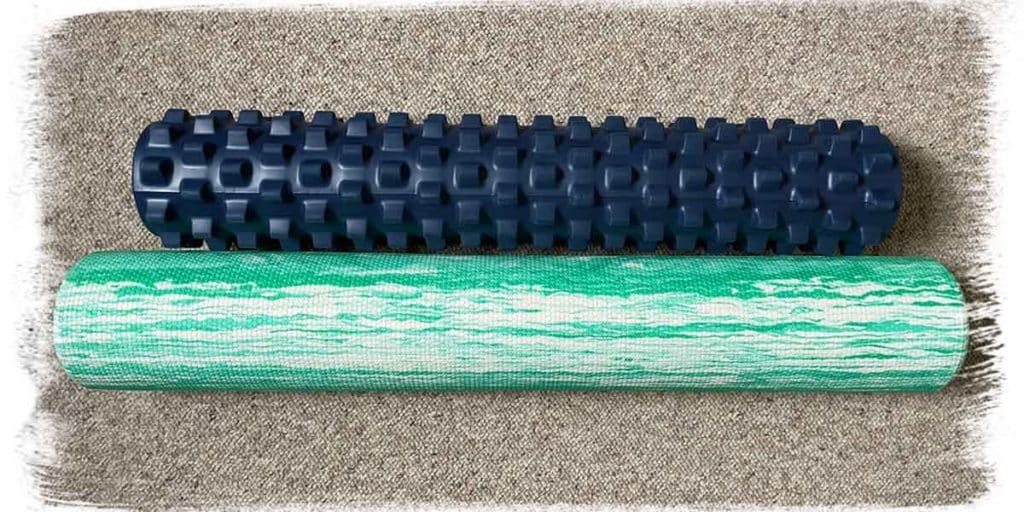
In order to better understand and contrast the differences between each type of roller, it may actually help to first go over the commonalities that these two types of rollers share. By learning these commonalities, it will become quite evident in which ways each one is different from the other.
By reading this section, you’ll likely gain a better understanding of how to get the most out of each type of roller as well.
Commonality 1: Why the rollers both exist
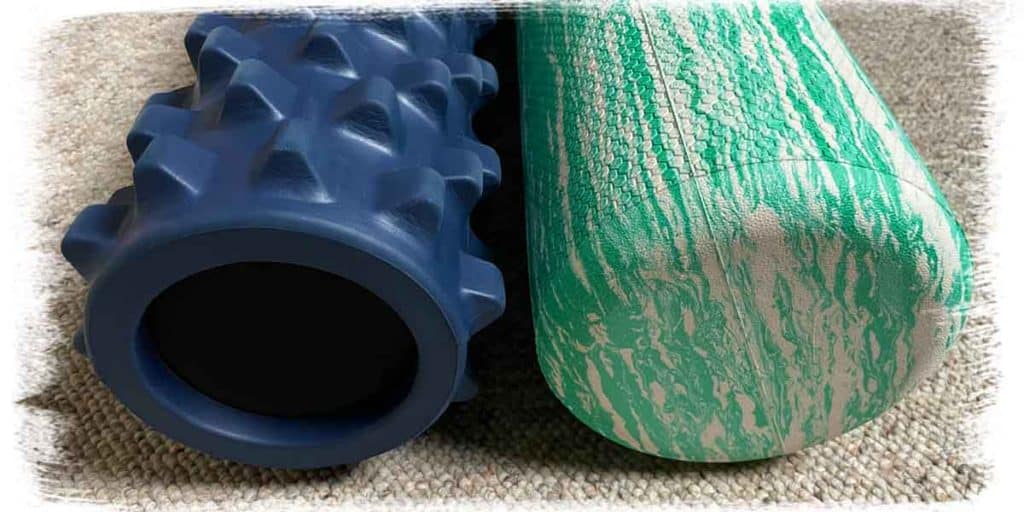
Both the traditional foam roller and the Rumble Roller exist due to the fact that people tend to experience soft tissue (muscle tissue) aches and pains within their bodies due to a variety of reasons. As a result, both of these rollers were birthed out of a need for people looking to improve blood flow, reduce muscle tension and mobilize their soft tissues all on their own.
You can think of each roller as a replacement for the hands of a massage therapist or other skilled healthcare practitioner who provides hands-on relief for tight and/or sore muscle tissues.
Related article: IASTM: Here’s How It Works To Decrease Pain And Improve Mobility
When either of these two types of rollers is used properly and on appropriate individuals, the result can be better physical movement, decreased perceived discomfort and even the potential for the reduced likelihood of the pain and movement dysfunction to occur again. Rollers can also be used to keep soft tissue healthy, as a form of preventative medicine.
More simply stated: rollers can be used for rehabilitative purposes (i.e. use after pain or dysfunction are present) or prophylactic (preventative) purposes.
Commonality 2: Who uses them
The traditional foam roller and the Rumble Roller are used by people from all walks of life. Foam rollers are used all around the world by the young as well as the elderly, the pain-free as well as those with pain.
Commonality 3: How they’re used (application)
Broadly speaking, when it comes to pain reduction and improving tissue mobility, each of the roller types is used in the same way; the user presses a targeted part of their body down onto the roller (often by laying on top of it) and slowly rolls back and forth over the area they are attempting to treat. Rollers work best when rolling over areas that have a lot of muscle tissue or “padding”. This is since both rolling over bony areas is not comfortable and these areas lack any real muscle tissue that can be treated.
When using foam rollers for relieving muscle tension and associated discomfort, the most commonly self-treated areas on the body tend to be the limbs and the mid-upper back.
Commonality 4: They both come in various firmnesses
Since every individual can have different extents of muscle tension or pain, the traditional foam roller and the Rumble Roller both come in various firmnesses as a means to help provide the user with the most ideal experience possible; a roller that is too firm will simply be intolerable due to the heightened sensitivity from the firm roller pressing down on the affected tissue(s). Conversely, a roller that isn’t firm enough likely won’t yield any perceivable benefits due to less than adequate foam roller force influencing the targeted tissue(s).
As a general rule: softer rollers are more ideal for those with rather tense, immobile or sensitive tissues while firmer rollers are more ideal for those who have less muscle tension, sensitivity to pressure or rather supple muscle tissues.
Commonality 5: They both come in various sizes
Practicality and convenience is a chief consideration to anyone wanting to purchase or use a product. When it comes to both of these types of rollers, they come in different sizes in order to afford more practicality, versatility and convenience to the variety of individuals’ needs who wish to use them.
Larger sizes for each type of roller tend to be used for more stationary environments, such as within the home or within a gym, where the individual doesn’t intend to transport the roller from one location to the other. Larger sizes of rollers also tend to offer more treatment variability since more of an individual’s body tends to be placed on the roller.
Smaller sizes tend to be used for an added portability factor; “travel” sized rollers can often fit into gym bags, suitcases or other personal containers. These smaller sizes allow for ease of portability due to saving vast amounts of space.
Differences between the Rumble Roller and the foam roller
With all the similarities and common traits between the two types of rollers having been discussed, now let’s look at the unique features that each one of these rollers can offer.
Keep in mind: The differences between each roller are neither good nor bad, per se. Rather they are simply unique features offered more exclusively to one than the other. Whether or not any of the following are pros or cons for you simply comes down to what you intend to use your roller for and what your individual preferences are.
Unique features of the Rumble Roller
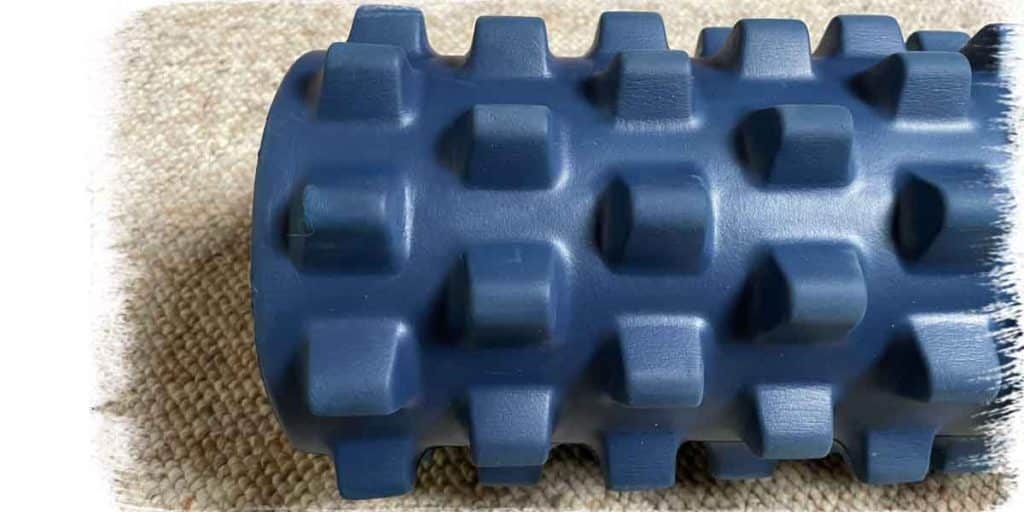
Well, the knobs and bumps sticking out in all directions on this thing should be the first evidently unique feature, ha. While some traditional foam rollers may have a tiny bit of texture on them, this texture is in no way functional. The knobs on the Rumble Roller, on the other hand, are quite functional.
These knobs or bumps are designed to create higher amounts of point pressure over portions of the muscle that is being rolled. Essentially, they act like the knuckles or the elbow of a massage therapist when trying to give more focal, intense pressure to the targeted area(s).
The resultant focal pressure from the knobs tends to create a much more intense feeling when rolling over muscle tissues, especially tissues that are tight or sore to begin with. As a general rule, the more tight/restricted/immobile these tissues are, the more uncomfortable or intense the rolling will feel. This is where the different firmnesses of the rollers can come in quite handy.
As with using a traditional foam roller, the slower you do your Rumble rolling over the targeted areas, the more effective the tissue release will likely be. While this discomfort can be rather unpleasant to go through, it’s important to know that it does not equate to physical harm. Generally speaking, the slower you go, the more effective the rolling session will be.
Unique features of the foam roller
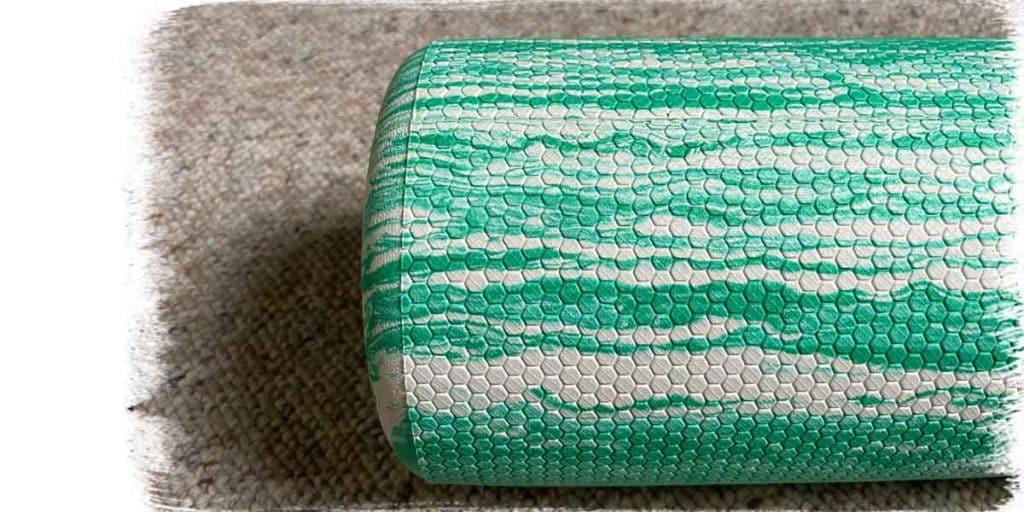
If it seems like the Rumble Roller has the traditional foam roller out-classed in every way, take a step back and think again. The foam roller lends itself to not only a great amount of tissue mobilizing movements, but also allows itself to be utilized for a number of exercises as well.
While the knobs or spikes on the Rumble Roller are great features to have, they’re not a make-or-break factor for helping to relieve discomfort or improving tissue qualities to those in need.
The overall most important factor in any roller is in fact its firmness in relation to the appropriateness of whom it is being used on.
In regards to the versatility of the traditional foam roller, it can out-class the Rumble Roller in the sense that it can be used for a variety of non-tissue mobilizing exercises that might otherwise be impractical when using the Rumble Roller.
A great example is some of the traditional transversus abdominis exercises commonly prescribed by physical therapists for patients or individuals who can benefit from learning advanced motor control exercises for the initiation and activation of their deep core musculature. Any of these exercises may be too uncomfortable or distracting when trying to lay on top of the Rumble Roller while simultaneously attempting to concentrate on the quality of the exercise movement(s).
These exercises are simply just a few of the literal hundreds of exercises that can be performed when needing to lay on a foam roller for an extended period of time. And it isn’t to say that they can’t be done on a Rumble Roller, but rather that it may not be all that ideal to do so.
Which one is actually better?
When it comes to trying to determine which roller is better or best for you, it will of course come down to your own individual needs. However, IF I could only select one, my personal preference would always be the traditional roller (provided it were to be the appropriate firmness for me), simply because I like the versatility it provides and I have plenty of other ways to target my tissues besides just relying on a roller (of any kind). But with that being said, I quite enjoy having the Rumble Roller at my disposal as well.
If someone has never done rolling before or needs a rather gentle introduction to tissue rolling, a traditional foam roller is likely the better of the two starting points. Once the individual’s tissue quality and suppleness improves, progressing to or incorporating the Rumble Roller is then likely a good idea.
This isn’t a hard and fast rule, mind you, but rather anecdotal experience and observation from years of not only doing tissue rolling on myself but also with my patients and clients. In a perfect world, you’d likely find yourself having both, as they are both powerful tools that complement each other quite nicely and effectively.
Bonus: What are vibration rollers?
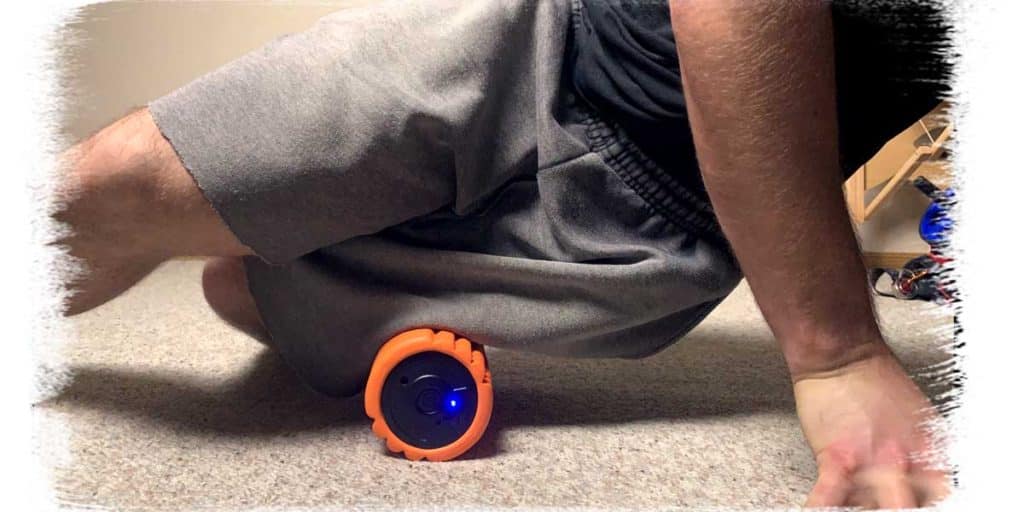
Over the last few years, there’s been a new kid on the block when it comes to different types of rollers. While the Rumble Roller was kind of seen as the next generation of foam rollers, vibrating rollers can be thought of as the next generation of Rumble Rollers. Essentially, rollers just keep on progressing in design, complexity and functionality.
This is largely because all three of these types of rollers attempt to do the same thing (improve blood flow, decrease muscle tension, improve mobility and decrease pain), just through different means. The foam roller uses pressure, the Rumble Roller uses more targeted pressure and the vibrating roller uses pressure and vibration.
Related article: Vibrating Foam Roller vs Regular Foam Roller: Proven Benefits of Each
Needless to say, these vibratory rollers are motorized and thus more advanced than ever before. Whether you consider this to be a good thing, a bad thing or just a “thing” is completely up to you.
How does vibration help with muscle relaxation?
Vibration therapy for orthopedic benefits has been gaining some academic attention over the last decade or so. In particular, science has been finding that vibration into soft tissues can help reduce muscle soreness and even enhance muscle strength in certain populations.
If you’re keen on learning more about what the scientific world is finding, here are some great journal articles to check out:
- Good vibrations?–The use of vibration therapy for exercise recovery, injury prevention and rehabilitation
- Effects of local vibration therapy on various performance parameters: A narrative literature review
- Clinical applications of vibration therapy in orthopaedic practice
- Vibration therapy in management of delayed onset muscle soreness (DOMS)
Final thoughts
When it comes to learning the differences between a traditional foam roller and the Rumble Roller along with figuring out which one may be best for you, don’t overthink things too much; they’re both great and have a ton of overlap with each other.
The most important thing is to make sure that the firmness is ideal for you and that your technique and application for rolling are on point so as to maximize the effectiveness of your rolling sessions. After all, the best tool is only as effective as your technical execution with it.
So whichever one you decide to go with, it’s likely a good choice. And as time goes on, you can always grab the other, adding to your arsenal of tools that help you to move better, feel better and help you to keep living life on your own terms.
Move well. Live bold.
-Jim

Hi! I’m Jim Wittstrom, PT, DPT, CSCS, Pn1.
I am a physical therapist who is passionate about all things pertaining to strength & conditioning, human movement, injury prevention and rehabilitation. I created StrengthResurgence.com in order to help others become stronger and healthier. I also love helping aspiring students and therapists fulfill their dreams of becoming successful in school and within their clinical PT practice. Thanks for checking out my site!

